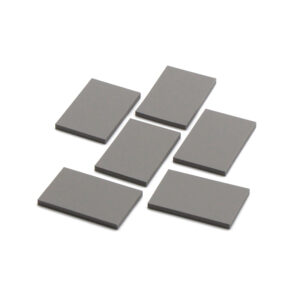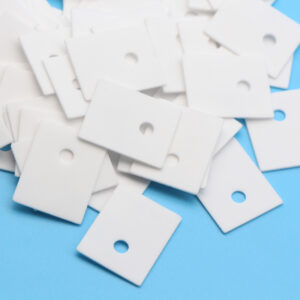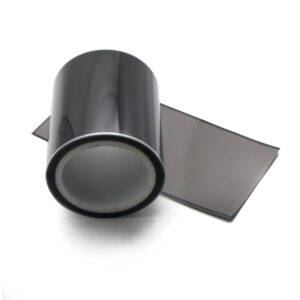Introduction
Thermal management is a critical aspect of electronic design, ensuring optimal performance, reliability, and longevity of electronic devices. One of the key factors in efficient thermal management is the use of thermal conductive materials. These materials facilitate the transfer of heat from electronic components to heat sinks or other cooling mechanisms, allowing for effective heat dissipation. In this article, we will provide a comprehensive guide to thermal conductive materials, including types, properties, and applications.
Chapter 1: Types of Thermal Conductive Materials
1.1 Metals
Metals are highly conductive materials commonly used in thermal management applications. Copper and aluminum are two of the most commonly used metals due to their high thermal conductivity, low cost, and availability. Other metals used in thermal management applications include silver, gold, and platinum.
1.2 Ceramics
Ceramics are also commonly used in thermal management applications due to their high thermal conductivity, low coefficient of thermal expansion, and excellent electrical insulation properties. Aluminum nitride (AlN) and beryllium oxide (BeO) are two common ceramic materials used in thermal management.
1.3 Polymers
Polymers are lightweight and flexible materials that are increasingly being used in thermal management applications. Polymer-based thermal conductive materials typically contain conductive fillers such as carbon, copper, or aluminum. These materials offer good thermal conductivity and low thermal expansion, making them suitable for use in high-temperature environments.
1.4 Composites
Composites are materials made up of two or more different materials that are combined to create a new material with improved properties. In thermal management applications, composites typically consist of a matrix material and a filler material, such as graphite or aluminum oxide. The matrix material provides mechanical strength, while the filler material provides thermal conductivity.
Chapter 2: Properties of Thermal Conductive Materials
2.1 Thermal Conductivity
Thermal conductivity is a measure of a material’s ability to transfer heat. Materials with high thermal conductivity transfer heat more effectively than materials with low thermal conductivity. Thermal conductivity is typically measured in watts per meter-kelvin (W/mK).
2.2 Thermal Resistance
Thermal resistance is a measure of a material’s ability to resist the flow of heat. It is the inverse of thermal conductivity and is measured in Kelvin-meters-squared per watt (Km2/W).
2.3 Coefficient of Thermal Expansion
The coefficient of thermal expansion (CTE) is a measure of a material’s tendency to expand or contract when exposed to changes in temperature. Materials with high CTE will expand or contract more than materials with low CTE.
2.4 Electrical Conductivity
Electrical conductivity is a measure of a material’s ability to conduct electricity. In thermal management applications, materials with low electrical conductivity are preferred to prevent electrical interference.
Chapter 3: Applications of Thermal Conductive Materials
3.1 Electronics
Electronic devices generate heat during operation, and efficient thermal management is essential to prevent damage and maintain optimal performance. Thermal conductive materials are used in electronic devices to transfer heat from electronic components to heat sinks or other cooling mechanisms.
3.2 Aerospace
Aerospace applications require materials that can withstand high temperatures and harsh environments. Thermal conductive materials are used in aerospace applications to dissipate heat generated by electronics and engines.
3.3 Automotive
Automotive applications require materials that can withstand high temperatures and provide reliable performance. Thermal conductive materials are used in automotive applications for engine cooling, transmission cooling, and brake cooling.
3.4 Industrial
Industrial applications such as power generation, oil and gas, and chemical processing require materials that can withstand high temperatures and provide efficient heat transfer. Thermal conductive materials are used in industrial applications forheat exchangers, boilers, and heat sinks.
3.5 Medical
Medical devices such as MRI machines generate significant amounts of heat during operation, and efficient thermal management is crucial for patient safety and device performance. Thermal conductive materials are used in medical applications for heat dissipation and temperature regulation.
3.6 Renewable Energy
Renewable energy systems such as solar panels and wind turbines generate heat during operation and require efficient thermal management to maintain optimal performance. Thermal conductive materials are used in renewable energy applications for heat dissipation and temperature regulation.
Chapter 4: Factors to Consider When Selecting Thermal Conductive Materials
4.1 Thermal Conductivity
The thermal conductivity of a material is one of the most important factors to consider when selecting a thermal conductive material. Materials with high thermal conductivity transfer heat more effectively than materials with low thermal conductivity.
4.2 Mechanical Strength
In addition to thermal conductivity, the mechanical strength of a material is also an important consideration. Materials used in thermal management applications must be able to withstand mechanical stresses such as vibration and shock.
4.3 Cost
The cost of thermal conductive materials is also an important consideration, particularly in high-volume applications. Metals such as copper and aluminum are often preferred for their high thermal conductivity and low cost.
4.4 Compatibility
The compatibility of a thermal conductive material with other materials in the system is also an important consideration. Materials that are incompatible can lead to corrosion or other issues that can impact performance and reliability.
Chapter 5: Emerging Trends in Thermal Conductive Materials
5.1 Nanomaterials
Nanomaterials, such as carbon nanotubes and graphene, have unique thermal properties that make them promising candidates for thermal management applications. These materials have high thermal conductivity and low thermal expansion, making them suitable for use in high-temperature environments.
5.2 Phase Change Materials
Phase change materials (PCMs) are materials that can absorb or release heat during a phase change, such as melting or solidifying. PCMs can be used in thermal management applications to regulate temperature by absorbing or releasing heat as needed.
5.3 Additive Manufacturing
Additive manufacturing, or 3D printing, is an emerging technology that is changing the way thermal conductive materials are produced. Additive manufacturing allows for the production of complex geometries and customized designs, making it ideal for producing thermal conductive materials for specific applications.
Conclusion
Thermal conductive materials play a critical role in thermal management, ensuring optimal performance, reliability, and longevity of electronic devices, aerospace applications, automotive applications, industrial applications, medical devices, and renewable energy systems. By understanding the types, properties, and applications of thermal conductive materials, designers and engineers can select the most appropriate materials for their specific application. As new materials and technologies continue to emerge, the field of thermal management will continue to evolve and improve, leading to even more efficient and effective thermal conductive materials.
Related Products

CTLC600 thermal pad
CTLC600 The high thermal pad is characterized by high thermal conductivity and good insulation performance. The raw materials of the product are made of Denka high thermal conductivity spherical alumina powder and Dow Corning polymer. It is a cost-effective thermal conductivity Insulation filling material, the natural micro-viscosity and softness of the surface can fully fill the air gap, complete the seamless heat transfer between the heat source and the heat sink, and improve the thermal conductivity. It is often used in scenarios requiring high-performance thermal conductivity, and is an ideal thermal interface material.

CTLT240 alumina thermal ceramic
The thermal conductivity of CTLT240 aluminum oxide is as high as 24W / MK. It is resistant to high temperatures and high pressure. The surface of the ceramic sheet is smooth without burr and burr. It is heated evenly and dissipates heat quickly; Simple and compact structure, small size, high strength, not easy to break, acid and alkali corrosion resistance, durable.

CTLGS1500 Graphite sheet
CTLGS1500 is a synthetic graphite heat sink. CTLGS1500 has a unique grain orientation, lamellar structure can be well adapted to any surface, even heat conduction along the two directions. Plane thermal conductivity of up to 1900 W/m-K. CTLGS1500 products while also the thickness of uniform heat to provide thermal isolation. Heat shielding and components while improving the performance of consumer electronics products. CTLGS1500 composite graphite sheet is a polyimide sintered novel film material with high thermal conductivity and excellent product design flexibility.

